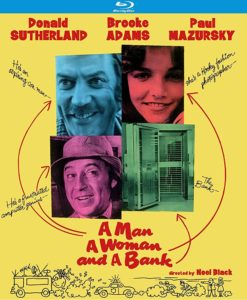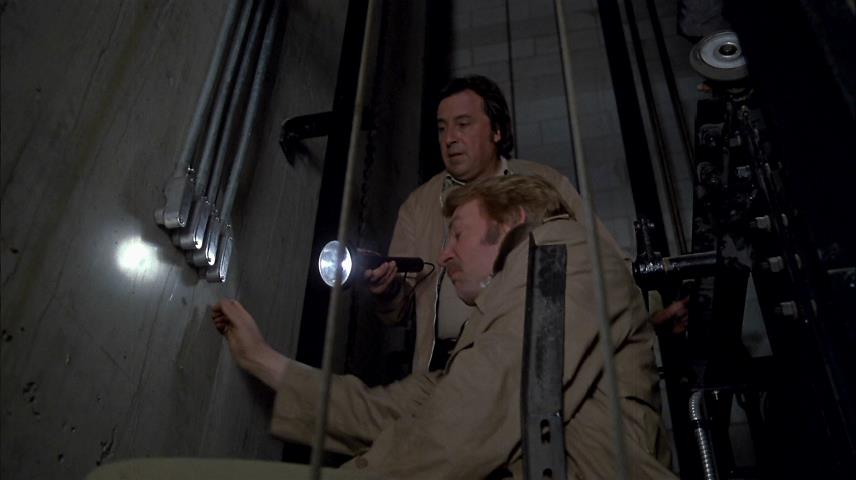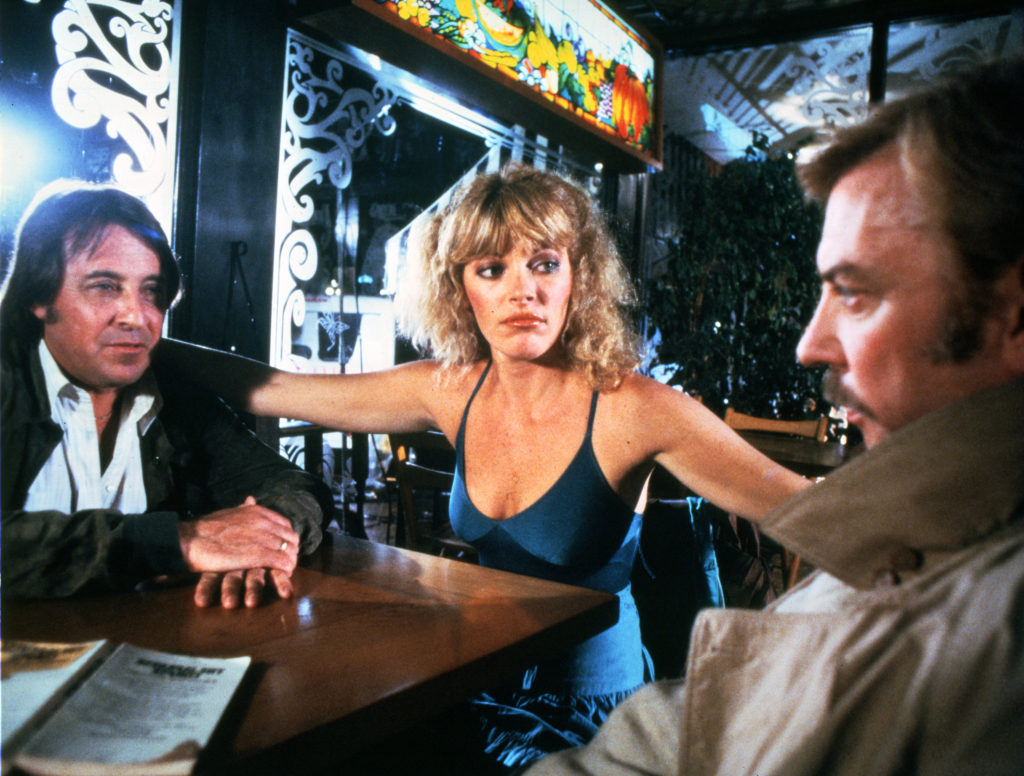A very big Withdrawal

Directed by Noel Black
Starring Donald Sutherland, Brooke Adams, Paul Mazursky
Released September 28th, 1979
Rated PG
We aren’t given much of a backstory on the man with the wry smile, but it may be fair to consider Reese (Donald Sutherland) a community organizer. At the moment he finds himself organizing the robbery of a community bank. It takes some convincing for his pal Norman (Paul Mazursky) to agree to help him, but not too much convincing. Norman is a put-upon middle-aged man, he of the overbearing offscreen wife. This sad sack is described as having a computer brain, which in the late 1970s means he builds an erector set to illustrate how they could relieve the financial institution of its money.
Why exactly would Norman agree so easily to help Reese rob a bank? How long have they been friends? What other jobs has Reese pulled in the past? We aren’t privy to any of this information. The screenplay decides to jump right into the planning of the heist. Reese’s idea is to pose as a worker during the bank’s construction and steal blueprints for the bank. Then he and Norman can plan the perfect break-in. Reese is successful, but as he’s leaving with the plans, his picture is taken by Stacey (Brooke Adams), an advertising photographer who wants to use Reese’s picture on a billboard to promote the completion of the bank’s construction.
In his quest to have the pictures of him destroyed, Reese gets closer to, and falls for, Stacey. He tells her he is an earthquake inspector. She doesn’t believe him. The budding romance between these two is easy to root for, as they both seem like people delightfully left of center. Complicating matters is Stacey’s ex-boyfriend, Peter (Allan Kolman), who won’t accept that their relationship is over. These days we would rightfully call this man abusive, but in 1979 he is regarded as little more than an annoyance for Stacey and Reese to deal with.

Saying she needs her space – a relatively new concept in the ‘70s – Norman’s wife kicks him out of the house. This is when we meet the film’s strangest character, Marie (Leigh Hamilton). As Norman’s new love interest, I suppose Marie is supposed to be comedic relief, but I found the character grating and the whole subplot irksome. After much build up, Reese and Norman are finally ready to rob the bank. The result is unfortunately underwhelming, but reinforces the notion that this is secretly a wacky love story and not really a heist film.
Paul Mazursky, a noted screenwriter and director himself, elevates the role of Norman with every look, nod, and exhausted sigh, easily making him the most interesting character in the film. Stacey is a photographer loaded with charm thanks to the talents of Brooke Adams. Her performance here contains shades of Margot Kidder’s plucky reporter Lois Lane in the previous year’s Superman. Donald Sutherland plays Reese like he’s the cat who ate the canary. He’s effortlessly cool and ready to scam anyone at a moment’s notice. He may be a con man, but the film treats him like it would be a crime if he didn’t try to rip people off.
I love the fact that at one point a character has a cold. It has no real bearing on the plot. It’s just something that happens in life. Sometimes you have a cold while you’re going about your regular work week. More films should incorporate illness without it being a major plot point. One of the only other movies to do this that springs to mind is Spielberg’s excellent Bridge of Spies.

A Man, a Woman, and a Bank is an easygoing movie that bets you’ll enjoy spending time with the characters of Reese, Norman, and Stacey. The cars, the fashion, and even the simple shots of the city have aged into a perfect time capsule of late 1970s life. It’s the kind of film that invites you to take a leisurely boat ride while a soft rock song plays over a sunset. I predict a resurgence in appreciation for films like this. Fun movies for grown-ups that don’t involve superpowers or shared universes. Bill Conti’s score is perhaps too busy, but I suppose that’s par for the course for Bill Conti.
As you would expect, the colors really pop on Kino Lorber’s Blu-ray release. The film looks and sounds great, and the disc features an insightful commentary from producer Peter Samuelson and director Noel Black. They tell us that a number of scenes featured improvised dialogue and that some theaters at the time were not able to spell out the film’s full title on their marquees, as it contains seven occurrences of the letter A.

